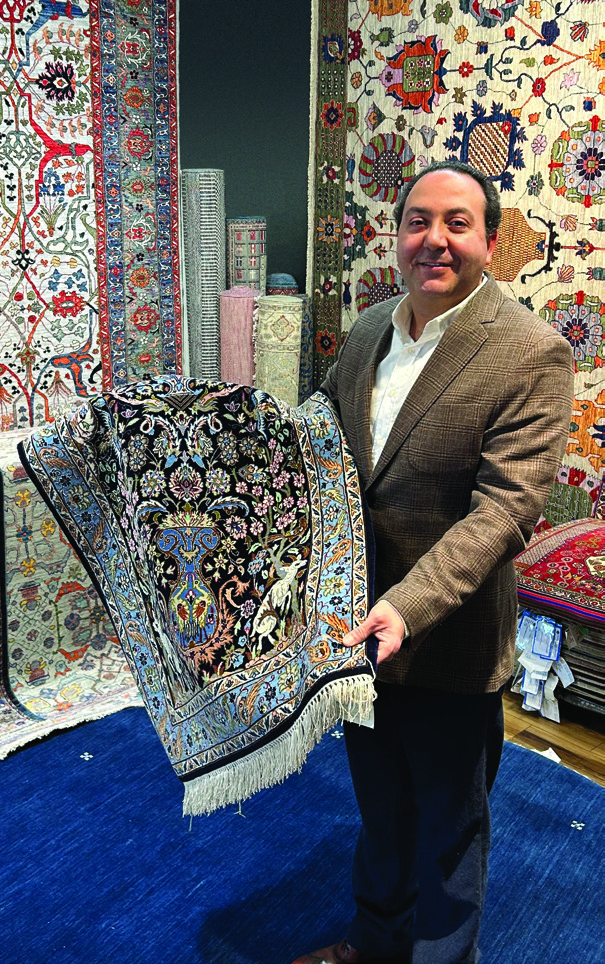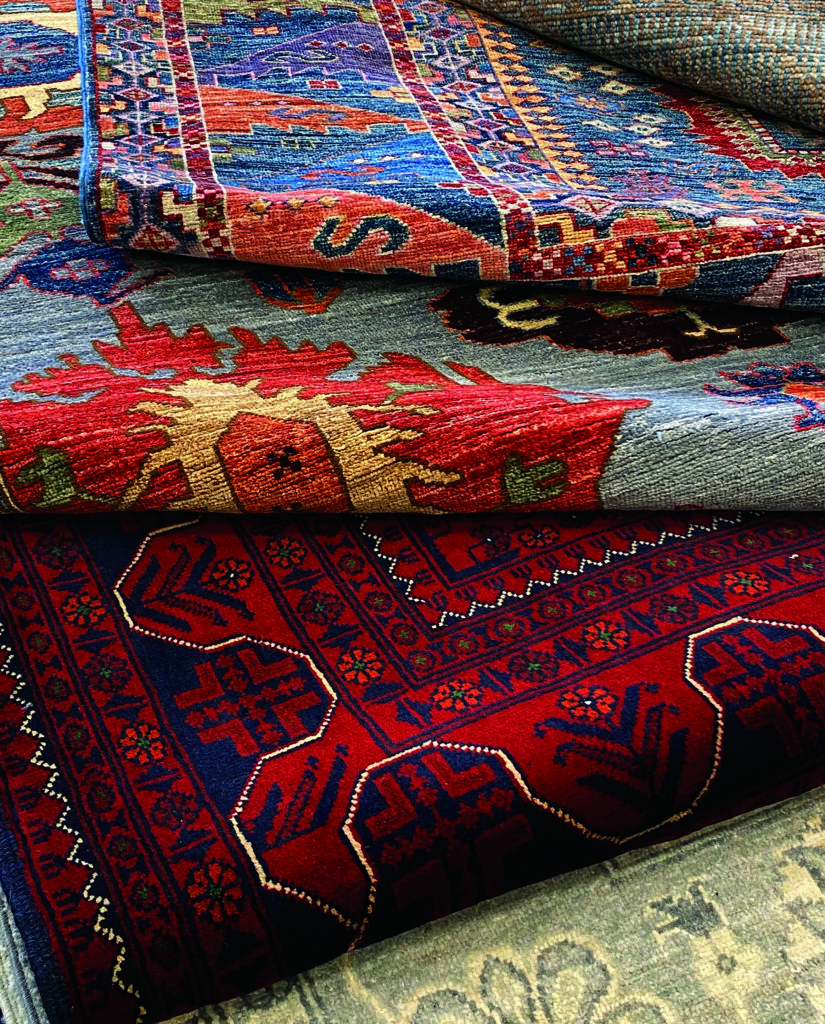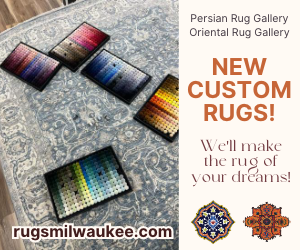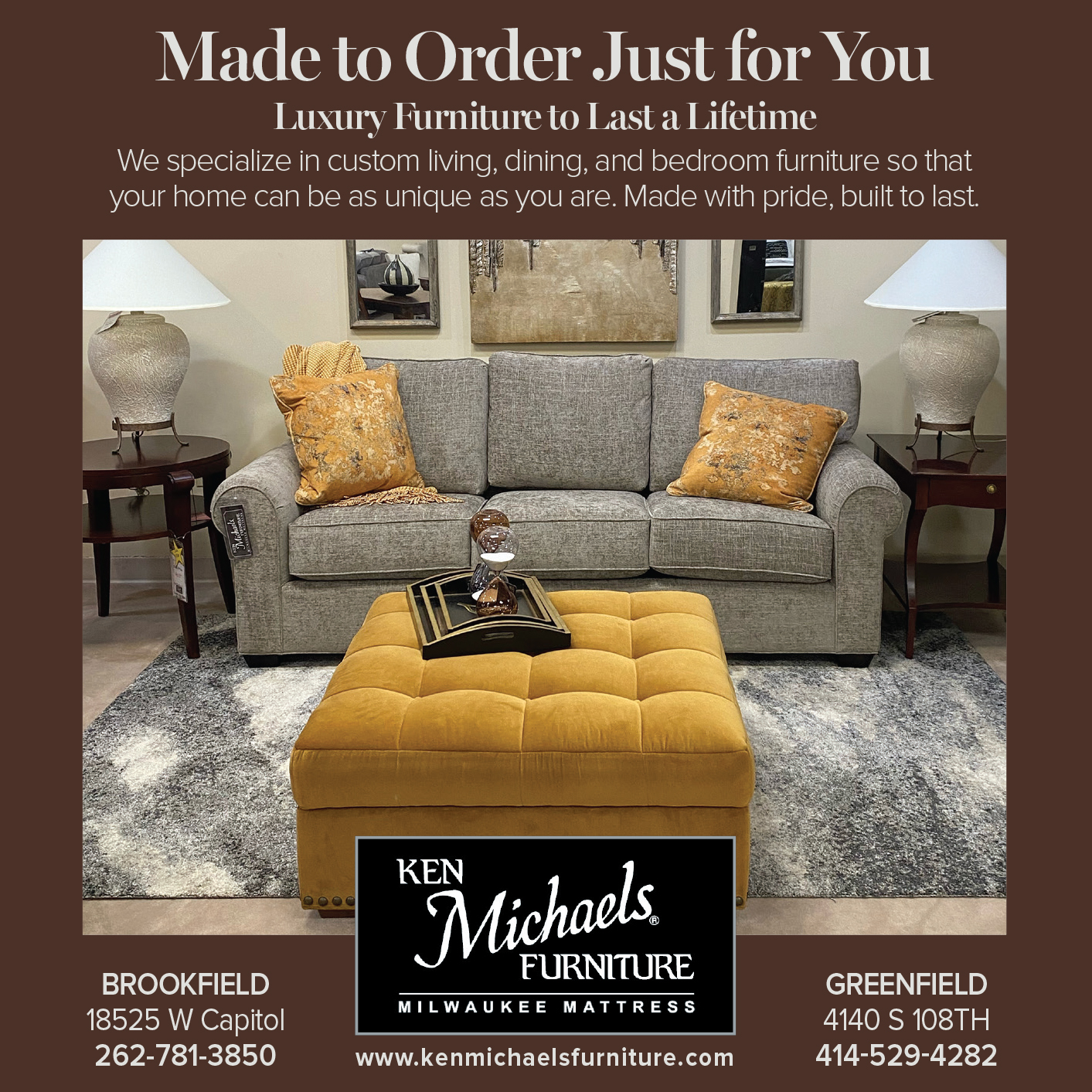For Your Home Spaces
By Anne Kaiser

Art is an integral part of many home spaces, lending a unique personality, beauty, and character to individual rooms and the living space as a whole. Whether homeowners create their own art, collect the work of local artists, or travel afar to bring back cherished pieces from around the world, the way we decorate and embellish our living spaces can be both functional and spiritually uplifting.
Many people might think first of paintings, photographs, or prints when visualizing the art for their home. But high quality, hand-woven rugs can also lend a stunning aesthetic value to the home, while simultaneously offering warmth and functionality.
Hamid Dehbod and his family are passionate about the intricate, beautifully crafted rugs of their Iranian homeland, and are dedicated to sharing these rugs with customers in Southeast Wisconsin.
Founder and owner of the Persian Rug Gallery at 309 West Silver Spring in Whitefish Bay and the Oriental Rug Gallery at 11005 West Bluemound Road in Wauwatosa, Hamid Dehbod enjoys sharing the history of his stores’ magnificent array of rugs with customers. Through an extensive selection of rug-related services, he helps educate homeowners about the care, display, and preservation of these beautiful functional works of art.

Hamid and his family are highly devoted to their successful family business; in addition to her other job as a college teacher of electrical engineering, Hamid’s wife helps part-time at the rug galleries. Hamid’s father performs many of the repairs on customers’ rugs, while Hamid’s sister does much of the administrative work at the rug galleries. Hamid’s brother-in-law runs the Oriental Rug Gallery. Together, the family ensures that their customers always receive the highest quality service and products.
Rugs found at the Dehbod family’s two lovely showrooms may be categorized by design, a process that simplifies the rug selection process for potential customers. Hamid explained that rugs and their designs fall into one of four categories: traditional; tribal; transitional; and vintage, or antique. Traditional style rugs tend to be very classic in color and design, sometimes featuring medallions or heavily bordered patterns. Tribal rugs are typically made by nomadic village-dwellers, and often are pictorial in nature, depicting symbols of animals or trees that the weavers might have seen. Transitional rugs, according to Hamid, form a connective bridge between the Old and New Worlds, and “incorporate…classic design in a modern style.” These rugs might include non-medallion designs with a modern flair, as well as abstractions.
Hamid is proud to offer each category of rug for sale in his shops, stating, “We have rugs from all four corners of the world.” Traditionally, rugs might be considered Persian (from Iran), or Oriental, Hamid explained. Rugs from India, Pakistan, Afghanistan, Turkmenistan, Uzbekistan, and Turkey are considered Oriental rugs.
“Everything here is authentic, hand-knotted wool, wool and silk, [or] silk,” Hamid said. He explained that wool is most practical; particularly for homeowners with pets, wool lasts longer and is easier to clean. The process of cleaning any high-quality, handmade rug is important to the longevity and care of the rug. Hamid encourages his customers to stay away from rented carpet cleaners, as these can negatively affect the colors and fibers of the rugs. Instead, he encourages rug owners to seek out the traditional hand-cleaning service provided at his rug galleries.


The Persian Rug Gallery and Oriental Rug Gallery offer repair, cleaning, and appraisal services. “We can provide anything from A to Z in [the] industry of rugs,” Hamid explained. “We do a lot of evaluation for value of rugs,” he added. “[We] can consult to sell or trade rugs, or consign for them to sell.” Hamid’s business can purchase rugs outright or offer consignment services, or customers can trade or upgrade old rugs for newer ones.
The Persian Rug Gallery and Oriental Rug Gallery also sell paddings to place beneath the rugs. Hamid noted the benefits of using padding in conjunction with the rugs; this important underlayment offers homeowners protection from sliding, while simultaneously adding a layer of comfortable cushioning and enhancing the warmth of the rugs.
Hamid’s businesses are affiliated with top interior designers, allowing him to offer customers additional insight and expertise in selecting the ideal rug for their homes. Hamid noted, “Picking out [a] rug…can be overwhelming. We would like to make things easy for customers, especially those who have supported us in southeastern Wisconsin.”
Customers will find a variety of handpicked sizes and shapes of rugs in all styles from around the world at both rug galleries. Hamid stocks many runners, as he fills many custom requests for customers’ stairs, as well as a large selection of round rugs, which are popular for kitchenettes and dining rooms. He further stocks a large selection of two-by-three foot rugs, which customers often prefer for kitchens, powder rooms, and as colorful accent pieces alongside a bedroom space. For those seeking rugs for northern Wisconsin homes or cabins, Hamid finds that five-by-seven foot and six-by-nine foot rugs are often popular. Customers often furnish their suburban homes with standard eight-by-ten foot and nine-by-twelve foot rugs, so Hamid stocks a lovely selection of these rugs, which are ideal for living or dining room spaces. For the convenience of customers, rugs come in a variety of shapes, from round to octagon, rectangular and square.
Rugs such as the ones found at Hamid Dehbod’s Persian Rug Gallery and Oriental Rug Gallery are an art form deeply embedded in the culture of their provenance. Rugs such as these have been made for hundreds of years, and exceptional time, care, and love go into their creation. According to Hamid, some museums house remnants of the oldest surviving rugs; older rugs still in use are often quite valuable, as their quality remains, even after as much as 200-300 years of use.
Many hours of care and labor go into the making of even a two-by-three-foot rug, which may take several months to complete. Hamid pointed out that many spiritual teachers, yoga studios, and meditation instructors select Persian or Oriental rugs because of the palpable sense of love and spiritual energy that go into the rugs’ creation.
These unique rugs, often hand-knotted in villages, possess a unique and abiding beauty and spiritual quality. Speaking about the crafting of each rug, Hamid explained, “You have to have patience in order to do it. It’s done with love, love from the heart. The hand-woven rugs are made with love and passion from the families sitting by the loom…Handmade rugs have a spiritual meaning; people sit for months by the loom. Imagine the stories [these] rugs could tell.”

This article is from the
EY February 2023 Issue


